| Home | Nature Weekly Index |
20 April 2014 | Phyllanthus species | The Stone Breaker Herb |
The main feature of the weedy Phyllanthus herb, at least in the visible sense, is the appearance of rounded fruits or capsules along the main vein at the underside of their leaves. It is commonly known by an appealing name, the Stone Breaker. I was asked recently about the true identity of this herbaceous plant found in Singapore.
After answering to this query, I did a more thorough investigation on its botanical name. So far, I have found at least 3 different species of these weedy Phyllanthus herb, namely Phyllanthus urinaria, Phyllanthus debilis and Phyllanthus amarus, in Singapore.
A distinguishing feature between Phyllanthus urinaria and the other 2 Phyllanthus species is the surface characteristic of their fruits that hang below the leaves. The difficulty of seeing the differences is the smallness of the fruits which make visual examination highly challenging in the field. The first 3 pictures below are from Phyllanthus debilis while the last 3 are from Phyllanthus urinaria.
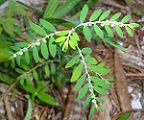
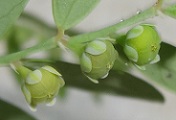
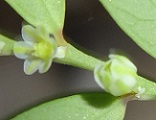
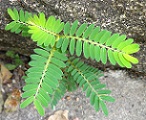
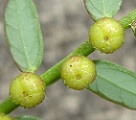
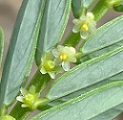
.jpg)
.jpg)
.jpg) As for Phyllanthus amarus, I had only saw one plant back in 2008. Upon close examination of the fruits, there are some
subtle differences between Phyllanthus amarus and the other two.
As for Phyllanthus amarus, I had only saw one plant back in 2008. Upon close examination of the fruits, there are some
subtle differences between Phyllanthus amarus and the other two.
There is another Phyllanthus species known as Phyllanthus niruri that may look very similar to the 3 Phyllanthus species mentioned above. It seems that this particular species may only be limited to Americas but was confused by some folks in the past with the other Phyllanthus species found in Asia. As a results, many reports in the past from Asia that mentioned Phyllanthus niruri might not be exactly talking about Phyllanthus niruri. This might also be the cause of the many confusing pictures of Phyllanthus niruri found in the Internet.
The main reason for the interest on the Phyllanthus herbs is due to its claimed medicinal value. As a traditional medicinal herb, Stone Breaker is said to be beneficial in quite a range of illnesses and diseases. Though I remain doubtful of such claims, they certainly help to maintain the interest level of these herbs among the general population.